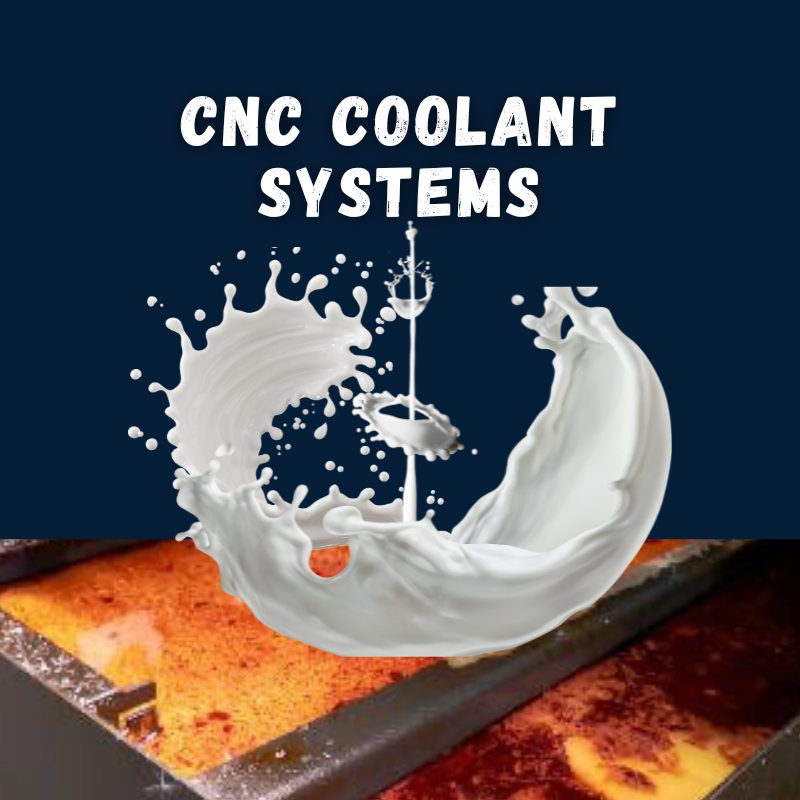When buying a CNC machine, most buyers focus on specifications like spindle speed, torque, axis travel, and automation features, but one of the most overlooked factors is vibration control. A machine that lacks proper vibration management can lead to poor surface finishes, higher tool wear, reduced precision, and costly downtime.
While CNC machines are designed to operate at high speeds and withstand cutting forces, not all machines handle vibration equally. A well-engineered CNC machine with strong structural stability, balanced spindles, and integrated dampening systems will deliver consistent accuracy and longer tool life. On the other hand, a machine with poor vibration control can lead to chatter, dimensional inaccuracies, excessive tool breakage, and increased maintenance costs.
Since vibration problems often aren’t visible until after installation, it’s crucial to evaluate a machine’s design, rigidity, and vibration control technologies before making a purchase. This guide explains why vibration matters, how to assess it when buying a CNC machine, and how to avoid costly mistakes.
Choosing a CNC Machine with Low Vibration for Better Performance
Not all CNC machines are built with the same level of rigidity and vibration control. Some machines are engineered specifically for stability, featuring heavy-duty cast iron frames, integrated dampening systems, and precision-balanced spindles that minimize vibration from the start. Others, particularly entry-level or lower-cost models, may lack proper structural support, leading to chatter, unstable cutting conditions, and reduced tool life.
Why This Matters When Buying a CNC Machine
Vibration directly impacts machining accuracy and overall shop efficiency. Machines that effectively control vibration produce smoother cuts, longer tool life, and more consistent part quality. A rigid, well-balanced machine also allows for higher cutting speeds without chatter, increasing productivity and throughput.
On the other hand, a CNC machine that struggles with vibration will require constant feed and speed adjustments, reducing efficiency. Operators may need to take lighter cuts, slow down cycle times, or replace tools more frequently, leading to increased operational costs.
What to Look for in a Low-Vibration CNC Machine
- Heavy-Duty Frame Construction – Machines built from cast iron or polymer concrete absorb vibration better than those with lightweight welded steel frames. A heavier, more rigid frame ensures that vibration is not amplified during high-speed cutting.
- Integrated Vibration Dampening Technology – Some premium CNC machines include active vibration control systems that dynamically adjust spindle speeds or compensate for movement to suppress chatter.
- High-Precision Spindles – A balanced, high-quality spindle reduces vibration, particularly at high RPMs, where excessive movement can impact surface finish.
- Reinforced Machine Base – A solid, stable foundation prevents vibration from transferring through the machine structure, keeping cuts precise and repeatable.
How Machine Design and Build Quality Affect Vibration
A CNC machine’s ability to resist vibration is largely dependent on its design, materials, and engineering quality. Machines with stronger structural frames, properly isolated bases, and precision components naturally handle vibration better than those with lightweight or poorly designed frames.
Frame Construction: Cast Iron vs. Welded Steel vs. Polymer Concrete
The material used for a CNC machine’s frame has a direct impact on vibration dampening.
- Cast Iron Frames – Naturally dampens vibration due to its high density and stiffness, making it a preferred material for precision CNC machines.
- Welded Steel Frames – Lighter and less stable, which may require additional vibration dampening features to compensate.
- Polymer Concrete Bases – Found in high-end CNC machines, offering exceptional vibration absorption and thermal stability.
Linear Guideways vs. Box Ways: Which is Better for Vibration Control?
- Box Ways – Absorb vibration better and provide greater rigidity, making them ideal for heavy-duty cutting and tough materials like titanium or steel.
- Linear Guideways – Offer faster movement and high precision, but can be more prone to vibration if not properly designed.
Machines with box ways generally have better vibration resistance, but linear guides can be effective if properly preloaded and supported.
How to Evaluate a CNC Machine for Vibration Risks Before Buying
Since direct vibration testing isn’t possible before installation, buyers should focus on design factors, manufacturer reputation, and pre-purchase testing guarantees to ensure the machine has strong vibration control.
Investigate the Machine’s Structural Stability and Weight
- Heavier machines with cast iron or polymer concrete frames naturally resist vibration better than lightweight alternatives.
- Machines with single-piece cast frames are more stable than those with bolted or welded components.
Ask for a Spindle Balancing Report and Tolerance Specs
- A high-precision, well-balanced spindle plays a major role in vibration control.
- Spindle runout should be ≤ 0.0002 inches (5 microns) for high-precision work.
- Machines with dynamic spindle balancing operate more smoothly across different RPM ranges.
Request a Test Cut Video from the Manufacturer
- Look for chatter marks on the machined surface in high-speed cuts.
- Request test cuts in hard materials like stainless steel or titanium to reveal potential vibration issues.
- Compare test results between different CNC models to evaluate performance.
Check if the Manufacturer Offers On-Site Calibration and Vibration Testing After Installation
- High-end brands like Mazak, Okuma, and DMG Mori offer vibration tuning and spindle balancing as part of their machine commissioning process.
- Some manufacturers provide installation guides to ensure the machine is set up on a stable foundation.
Consider a Conditional Purchase Agreement with a Vibration Guarantee
- Some manufacturers offer performance guarantees, meaning if the machine fails to meet vibration control expectations after installation, they will either adjust, replace, or refund under certain conditions.
Advanced Vibration Control Technologies in High-End CNC Machines
Some high-end CNC machines feature advanced vibration suppression technologies that dynamically adjust cutting conditions to minimize oscillations. These include:
- Active Vibration Dampening Systems – Real-time monitoring adjusts spindle speeds and cutting forces to counteract vibration as it occurs.
- Adaptive Control Algorithms – Advanced CNC software detects instability and automatically modifies tool paths to reduce chatter.
- Liquid-Cooled Spindles – Temperature changes can cause minor distortions in the spindle, contributing to vibration. Liquid-cooled systems maintain a stable temperature, improving precision.
- Structural Reinforcements and Damping Materials – Some CNC models use internally reinforced columns, honeycomb structures, or polymer-filled bases to absorb vibration at the source.
These technologies are typically found in premium CNC brands like Mazak, DMG Mori, and Okuma, offering superior vibration control for high-precision applications.
Why Vibration Control Should Be a Priority When Buying a CNC Machine
Vibration control is one of the most critical factors in CNC machine performance. Machines with poor vibration dampening lead to higher tool costs, lower productivity, and frequent maintenance issues.
Before buying a CNC machine, evaluate its frame construction, weight, spindle balance, and vibration control features. Spending a little more upfront on a well-designed, low-vibration machine can save tens of thousands of dollars over its lifespan.
A CNC machine is a long-term investment, so make sure vibration control is part of your buying decision!



